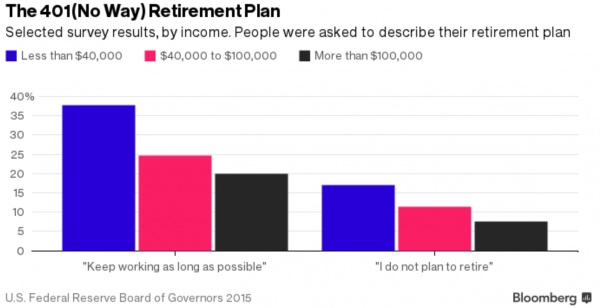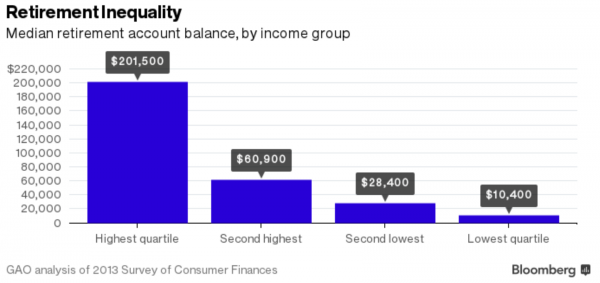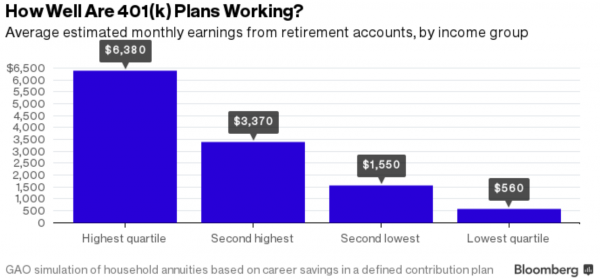As we have pointed out many times in the past (most recently here), the jobs “recovery” has gone disproportionately to older workers at the expense of younger workers.

In fact, as Bloomberg points out, the employment-to-population ratio for those 65 and over is at its highest level since the early 1960’s.
This creates a bottleneck for younger workers who are looking to move up from their current roles, and also those that are trying to gain entry level employment but can’t until the current occupiers of those seats can move up. The situation doesn’t appear to be on the verge of getting any better either, as 27% of Americans say they will “keep working as long as possible” according to a 2015 Federal Reserve study – and to make matters worse (for younger generations),12% of Americans say they don’t plan to retire at all.

The primary reason for the older generations remaining in the workforce isn’t surprising: people simply don’t have the money to retire. Three in five retirees surveyed by the Transamerica Center for Retirement Studies said making money or earning benefits was at least one reason they had retired later than planned, and almost half said financial problems were the main reason for working past 65.

With nearly 60% of all U.S. households having no savings in individual retirement accounts such as a IRA or 401(k), the fact that older workers simply can’t afford to retire is not a surprise. Those that do have a retirement account, predictably see different levels of funding according to their income.

And of course, those with the highest funded retirement account receive the highest monthly returns – said otherwise, the wealthy grow disproportionately richer in retirement as well.

What all of this means is that the trouble younger workers are having getting into the workforce will continue, furthering their inability to make any payments on the massive amount of student loan debt racked up while in college. For those that are fortunate enough to already be in those entry level positions, they’ll have to make due with the current situation, because the older generation isn’t going anywhere. What it also means, is that the Federal Reserve better figure out how will it keep market levels where they are, otherwise it runs the risk that what little is currently in retirement accounts will be wiped out. If there is a replay of 2008, the younger generations might as well hang it up – as well as those institutions that are holding the corresponding student debt.













Leave A Comment